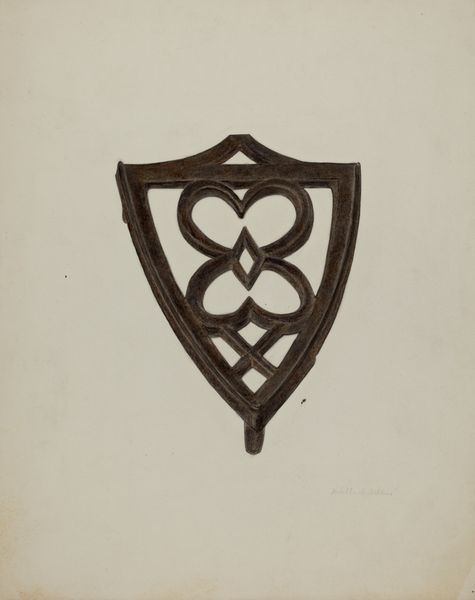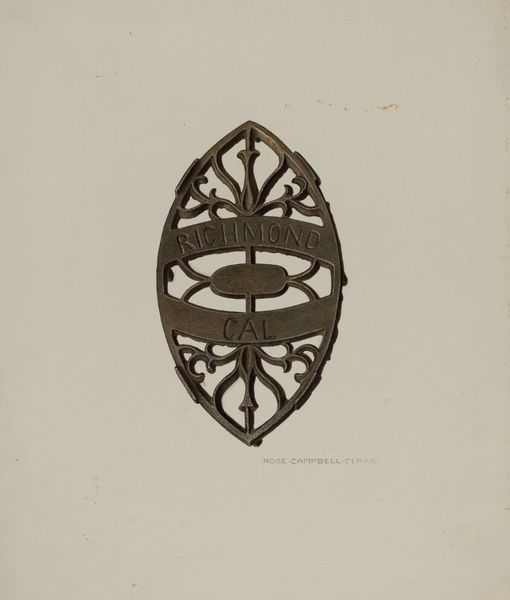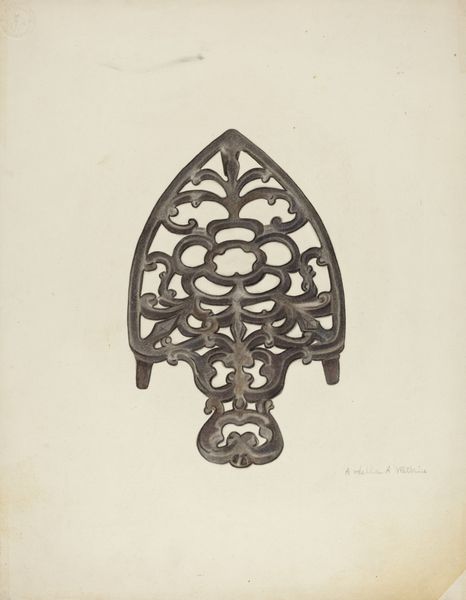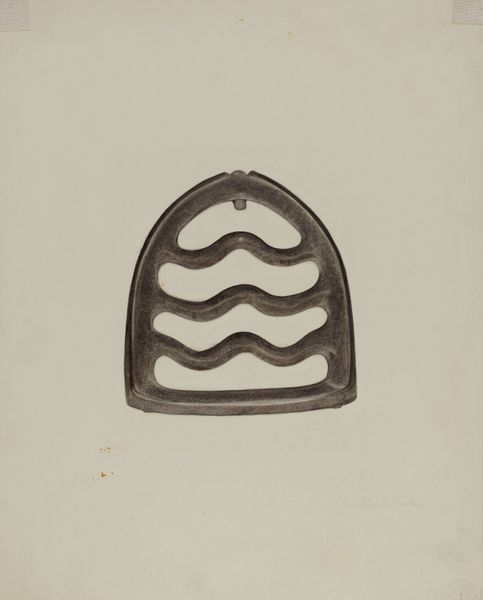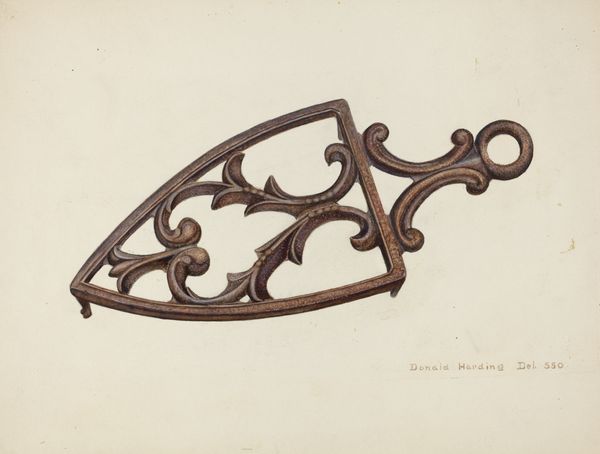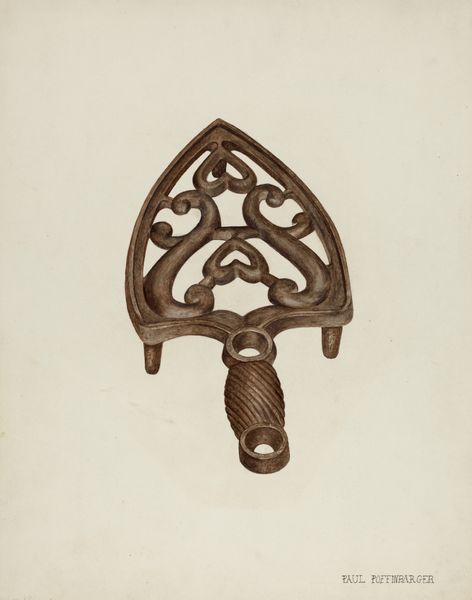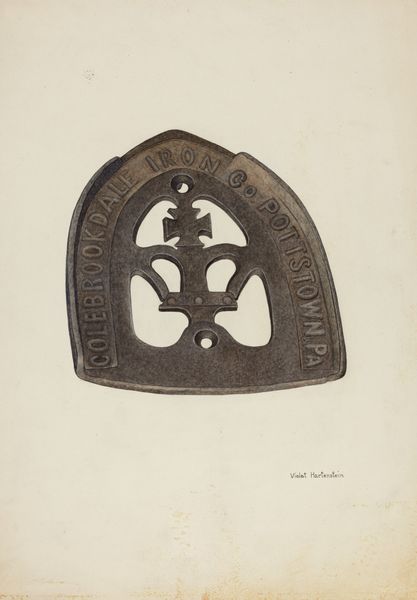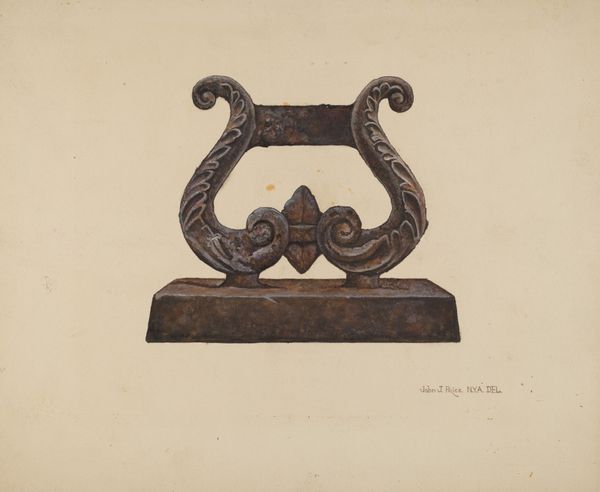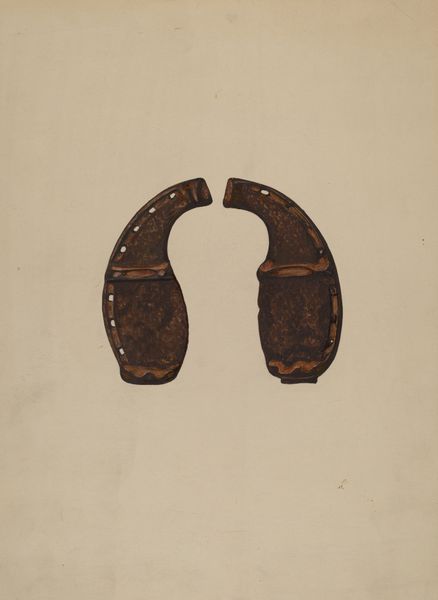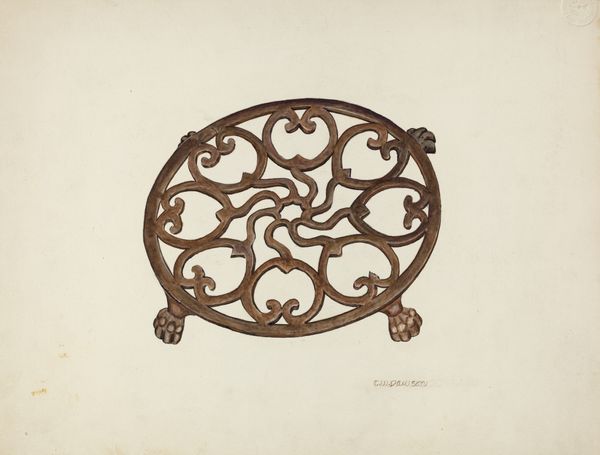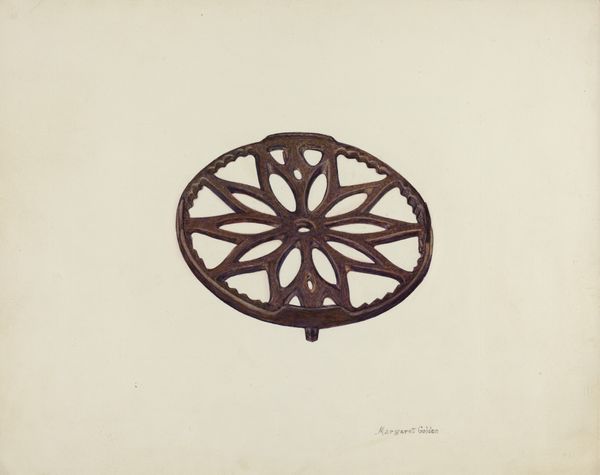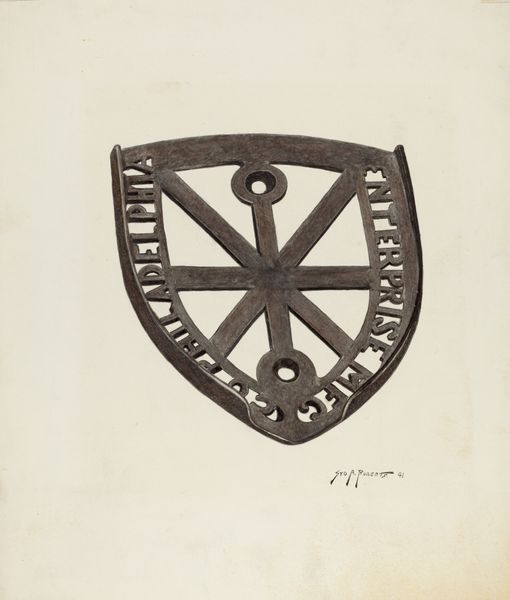
drawing, pencil
#
pencil drawn
#
drawing
#
pencil drawing
#
pencil
#
realism
Dimensions: overall: 36.9 x 29.1 cm (14 1/2 x 11 7/16 in.)
Copyright: National Gallery of Art: CC0 1.0
Curator: Here we have Margaret Golden's "Trivet," a drawing from around 1941, rendered in pencil. The texture gives the object such depth and a presence of weight. What stands out to you? Editor: Immediately, the utilitarian aspect strikes me. A trivet—something so functional and humble elevated through representation. It also appears quite weathered. Curator: Absolutely, that elevation of the mundane is key. This was created during the New Deal era. Golden was likely part of the Index of American Design, documenting vernacular objects. How might that impact its interpretation? Editor: Context is essential. The Index aimed to define a national aesthetic, rescuing these humble objects from obscurity by highlighting American ingenuity and the everyday labor involved in their production. I see not just a drawing but documentation of an item mass-produced in the image of art, by an iron foundry to begin with. Curator: It certainly challenges notions of fine art, right? Golden, in portraying the trivet, directs us to examine issues of craftsmanship, gender roles tied to the domestic sphere, and what we deem worthy of artistic representation. Note the initials seemingly embedded within the design. Who do you think "AIS" stands for, if anyone at all? Editor: Interesting observation! While the initials might have had a specific foundry, owner, or historical link to this particular object, I cannot pretend to say for sure what, if anything, they stand for. What is certain to me is the object's function—elevating hot dishes above the dinner table as a kind of unsung working class hero in our everyday routines. Curator: Exactly. Perhaps the initials don't denote a single, defined narrative. Instead, their presence, within the composition, alludes to identity, labour, and the stories imbued in mass-produced items of the era, with deep ties to family histories. Editor: It speaks to the democratizing impulse, a reverence for the labor and craft inherent in the simplest items of daily life. In essence, the value we ascribe to material objects holds significant social weight, then and now. Curator: In short, we are left considering who creates value, and who is often unseen. Thank you for your valuable perspective. Editor: Thank you, the labor and story around that humble trivet are what truly stand out for me!
Comments
No comments
Be the first to comment and join the conversation on the ultimate creative platform.
